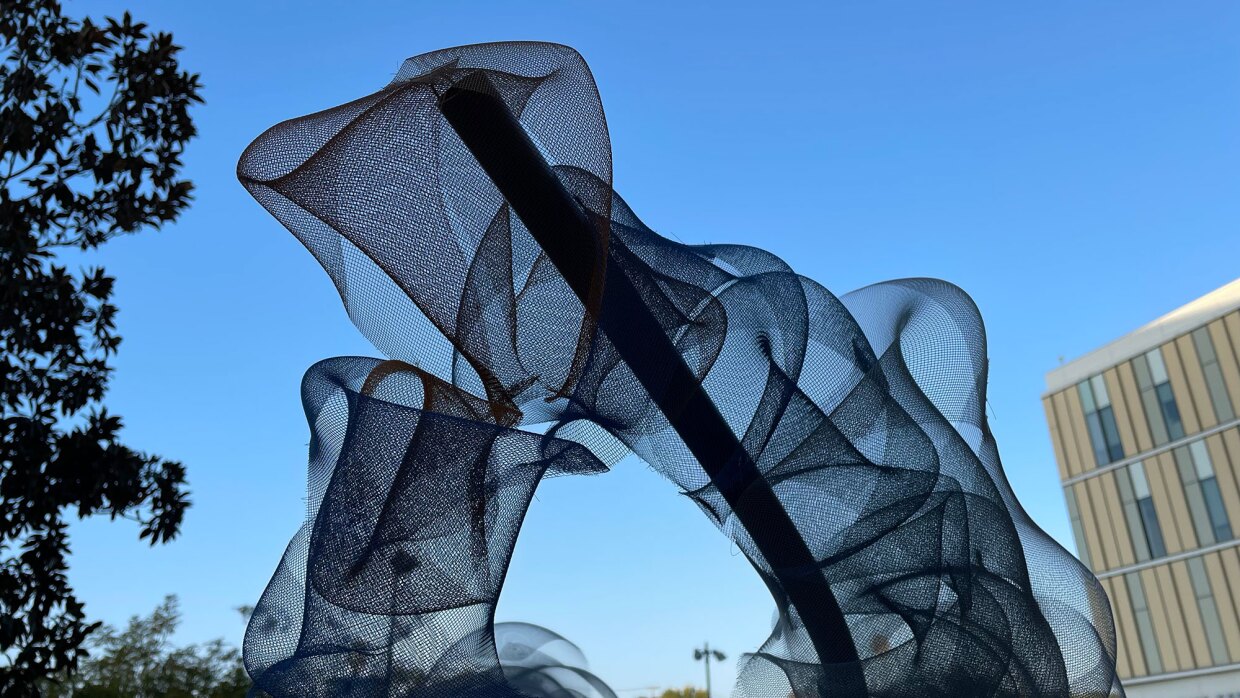Jennifer Vargas: 'Shadow Work 01'
On view outside the Mesa College Art Gallery
Twisted and layered into gentle patterns, I love local sculptor Jennifer Vargas' use of fine wire mesh in her works, whether large-scale sculptures or smaller pieces. The density of the mesh plays with light and shadow, and layers and intersections create gradients and gradual patterns. It's almost baffling how a material with such a hardness — metal — could look airy and soft. Her work is mesmerizing, and transforms as you approach or move around it.
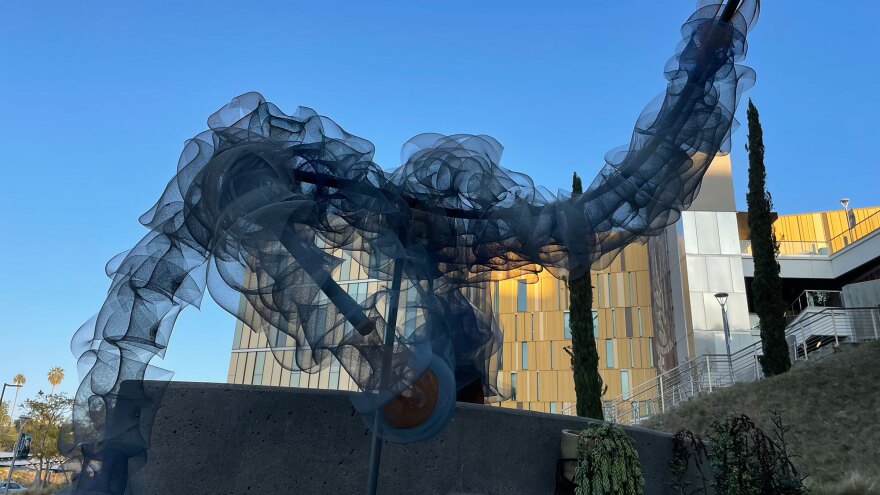
Right now, Vargas has installed a sculpture outside of the Mesa College Art Gallery — part of the Sowing Seeds of Universal Language exhibition curated by the museum studies class. The piece almost undulates up from the cement, with splashes of blues and oranges. Don't forget to crouch down if you're able, and look up at the sky through the mesh.
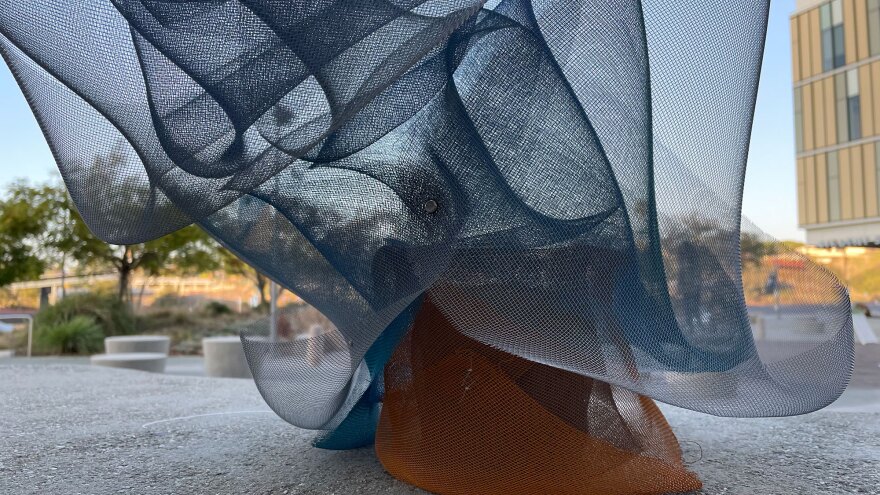
While the gallery hours are limited to Tuesday through Thursday, you can visit Vargas' sculpture whenever you can get to campus. Parking is enforced Monday to Saturday, 24 hours a day, but permits are just $1 an hour and there is ample parking right in front of the gallery — or hit it up on a Sunday like I did.
Details: On view through Dec. 15, 24 hours a day, 7 days a week. Mesa College Art Gallery, 7250 Mesa College Dr., Linda Vista. Free.
Maggie Shen: '_____SCAPE'
On view at the Athenaeum Art Center during two performances
In an intricate interdisciplinary installation, artist Maggie Shen is combining food with her study of landscapes and the environment, home and societies. Using performance, interactive edible sculpture, permanent sculpture, AR and animation, Shen wants visitors to think about the large-scale systems involved in food production, harvesting and consumption — and their impacts — by making the scope much smaller. Inside a gallery, for example.
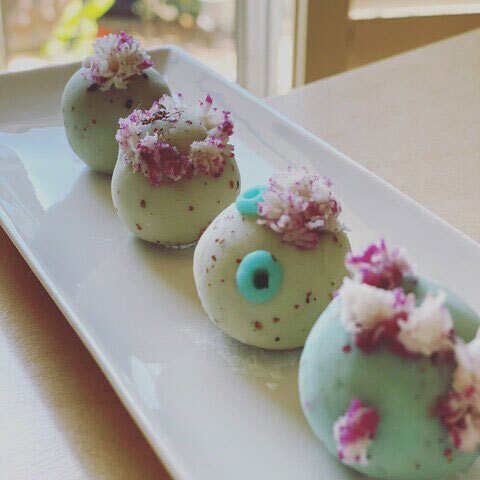
"Because I shrunk the size of the landscape, that makes the relationship between people and land become more obvious. Like what we do to the land, sometimes it can be very abstract if the nature is so big," Shen said.
To create that smaller scope, she's turned food into intricate, edible sculptures. Shen said that she just worked with the food like she would traditional sculpture materials, but being mindful of consistency. She also wanted to challenge taste buds — the audiences get to taste the food — with surprising flavors. Imagine edible sand that tastes like lemon, or a sea sponge made from avocado.
While the exhibition is on view at the Athenaeum Art Center in Logan Heights (part of the Bread and Salt complex), the work is intended to be viewed as a performance piece. Shen and another actor harvest the food while animation and an original soundscape accompany the work.
"The performance is driven by the music," Shen said. The soundscape is divided into three parts: the sounds of Bread and Salt, forest sounds and a whimsical rhythm.
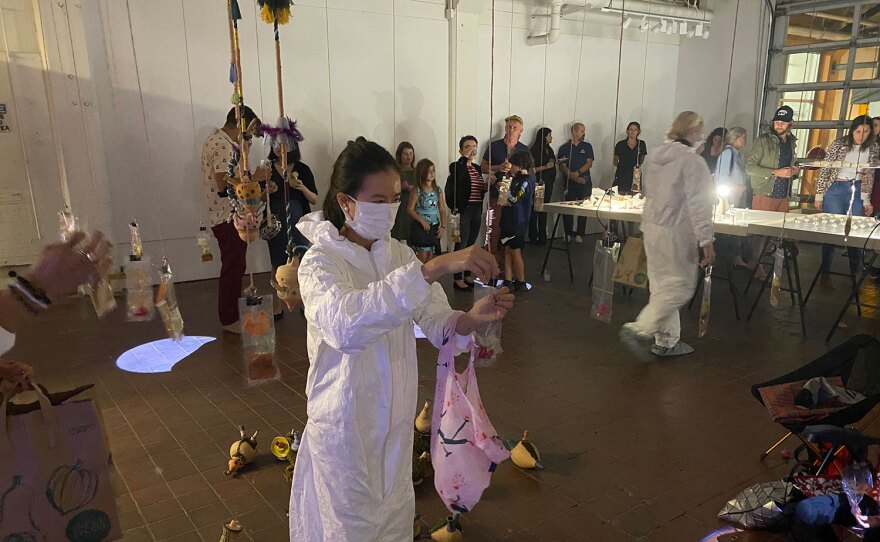
At the end of the performance, everyone can go to the landscape area to enjoy the food. "That represents that we consume our land," Shen said. "By realizing we are part of the whole, we may have a chance to make different decisions."
Details: Performances Friday, Dec. 10, 2021 and Saturday, Jan. 8. 2022, both from 6-8 p.m. Athenaeum Art Center, 1955 Julian Ave., Logan Heights. Free.
Paul Strand: 'Wall Street, New York (1915)'
On view at San Diego Museum of Art
Part of SDMA's current major exhibition, Masters of Photography: The Garner Collection, this Paul Strand (American, 1890-1976) work somehow stands out among giants. The photography is divided into three sections, but somehow the Strand work feels like it transcends all of them.
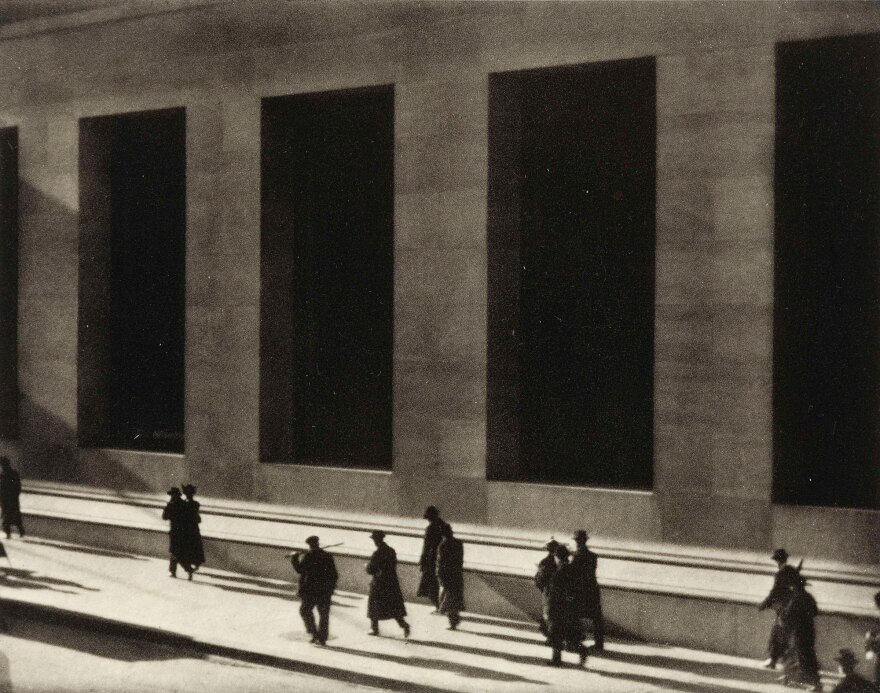
The seemingly simple subject matter is a dozen figures, rushing to work in front of the distinct J.P. Morgan building on Wall Street, but the abstraction of Strand's composition builds on what you'd expect to fixate on in a photograph like that: the historical curiosity of 1915-era capitalism. In the perspective, the people seem tiny in scale, and by nature of the light, they're shrouded in silhouette to look almost ghost-like. The building's windows appear ominous, too, thick black rectangles lording over the street.
The entire exhibition is worth a browse, but this Strand photograph stopped me in my tracks.
Details: On view through Feb. 21, 2021. Open every day except Wednesday, 10 a.m. - 5 p.m., Sundays noon - 5 p.m. SDMA, 1450 El Prado, Balboa Park. $8-20
Reiko Sudo: 'Patched Paper (破れ紙)'
On view at the Japanese Friendship Garden
"Nuno, the Language of Textiles" is an exhibition tucked away in the lower level of the Japanese Friendship Garden, inside a relatively unassuming gallery room, the Inamori Pavilion. Inside, thirty metal-rod stands — part dress form, part glorified coathanger — are arranged in even rows, each draped with a delicate cloth.
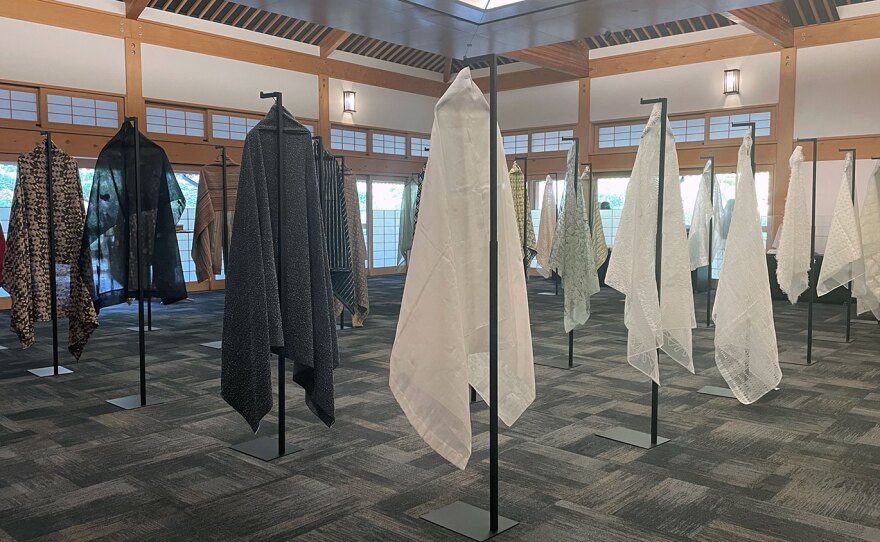
These works are from the Nuno studio, the influential Japanese textile design firm founded in 1984 by Jun'ichi Arai, though Reiko Sudo has been at the helm since 1987. Each textile is a harmony of form, function and material, and one of my favorites is the 1997 float weaving work, "Patched Paper," where scraps of fine white paper are slipped in the fibers of the otherwise sheer white cloth, protruding out like chunky, squiggly hair or feathers. It seems both fragile and quotidian, almost toy-like at the same time as being really refined.
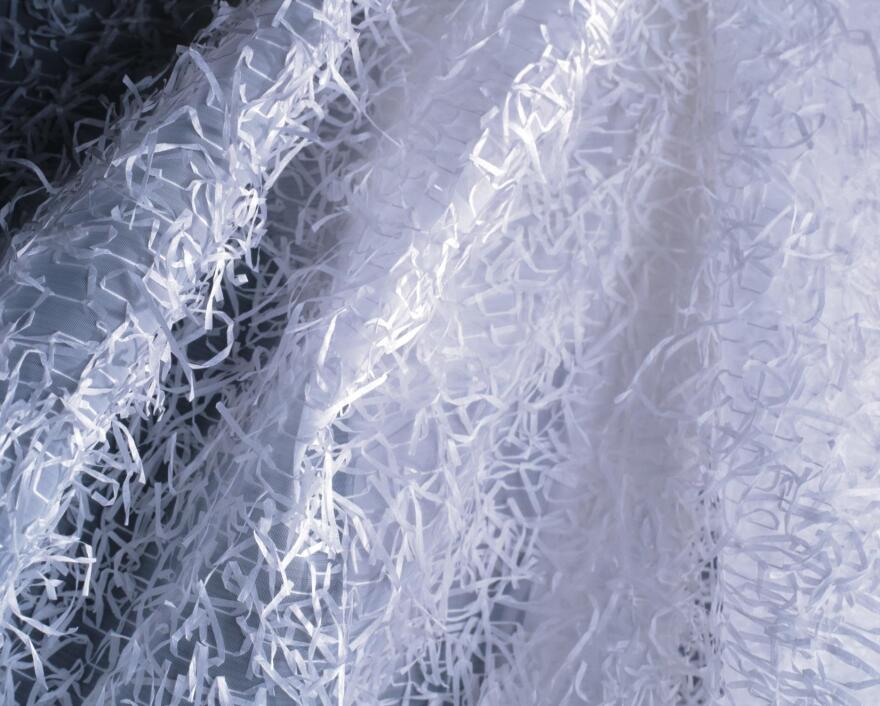
Details: On view through Feb. 27, 2022. 11 a.m. - 4 p.m. daily. Japanese Friendship Garden, 2215 Pan American Rd. E., Balboa Park. $10-12.
Wendy Maruyama: ''The Tag Project'
On view at PHES Gallery
This sculpture is part of Wendy Maruyama's larger work, "Executive Order 9066," named after the order by President Franklin Roosevelt to authorize the creation of "military areas" and "evacuate" all persons deemed a threat to national security during the World War II — which would become what is now known as Japanese American incarceration camps.
For "The Tag Project," Maruyama created thousands upon thousands of paper tags, replicas of the tags prescribed to each Japanese American sent to the internment camps — an estimated total of 120,000 individuals. The installation divides the 120,000 tags into a series of hanging bunches, divided by camp, and the bunches are unsettlingly suspended from the ceiling. The sheer quantity of tags and the inhumanity of what they represent feels monumental and overwhelming.
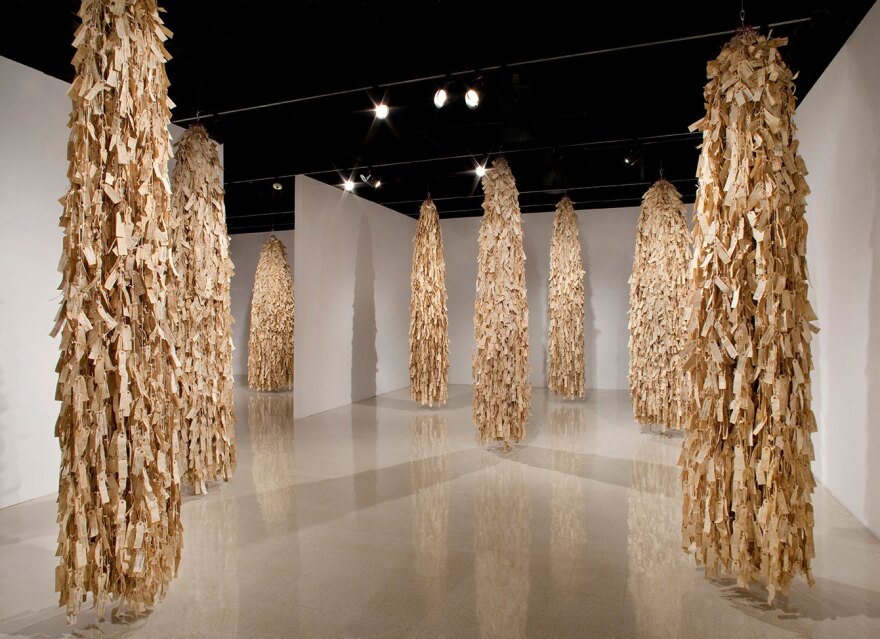
The work is installed as part of "Impermanence," a new exhibition at PHES Gallery that focuses on transitory aspects of life, objects and art, and will also include sand mandala construction and dissolution ceremonies by Tibetan monks from the Gaden Shartse Monastery. Mandala creation begins Wednesday at 10 a.m. and continues each day until the dissolution on Saturday Dec. 11 at 2 p.m.
Details: On view through Feb. 13, 2022. Gallery hours are Thursday through Saturday from 2 - 7 p.m. or by appointment. PHES Gallery, 2633 State St., Carlsbad. Free.

